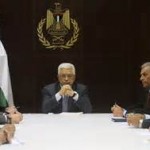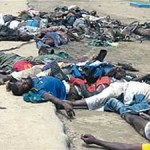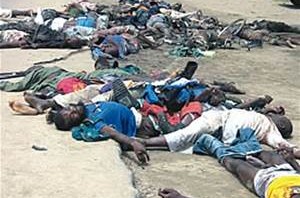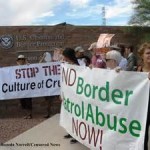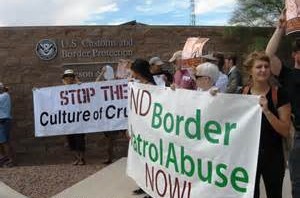Do you ever wonder who creates political agendas when it comes to foreign policy? Do you wonder who works behind the scenes with whom and why?
When it comes to major opposition to policy you can be sure there are those who would rather stay hidden and there are two people you should be introduced to, Paul Pillar and Martin Indyk.
The hidden mission of both of these men goes to foreign policy and mostly Israel. To put it simply, anti-Semitism. There was an article in Newsweek magazine regarding epic spying by the Israelis inside the United States. What is more, the State Department has stopped some interesting visa travel authorizations of Israelis coming to America, when in fact Israel is an open visa country. That however did not matter to Hillary Clinton and most especially to John Kerry. This is slowly painting the picture on why John Kerry has taken an aggressive stand to blame Israel for the failed peace talks with the Palestinians. But who advised John Kerry? Enter Paul and Martin.
Paul Pillar, a retired CIA intelligence officer and the main named source in this week’s Newsweek article, ‘Israel Won’t Stop Spying on the U.S.,’ which was rejected by Israeli officials, is also an outspoken supporter of the American Studies Association boycott of Israeli universities, according to an article he wrote for The National Interest.
“As a matter of intent, justice, legality, and morality, the recent decision by the American Studies Association to boycott Israeli academic institutions is a righteous action,” Pillar wrote in December.
The ASA boycott was condemned by over two hundred university presidents and many human rights organizations around the world.
In his article supporting the ASA boycott, Pillar said, ”The government of Israel, while paying lip service to the idea of a Palestinian state, occupies indefinitely, and continues to colonize, land that Israel conquered in a war it initiated 46 years ago and is home to Palestinian Arabs, and in so doing is depriving Palestinians not only of self-determination but of most of their political and civil rights as well as keeping them in economic subjugation.”
“Israel is the occupier. It is easily the most powerful state in the region. It is in control. The Israeli government could make such a settlement a reality within weeks if it decided to. It instead prefers to cling to conquered land rather than to make peace, and to continue the colonization that threatens to put a peace out of reach.”
The Jewish Independent, which flagged Pillar’s column in the wake of the controversy over his comments in Newsweek, said, “This, folks, is Newsweek’s source on how the Zionist spies are undermining America.”
The publication said the Newsweek article, written by Jeff Stein for his ‘SpyTalk’ column, was reminiscent of the anti-Semitic accusations of the hundred-year old French ‘Dreyfus Affair,’ when a Jew was accused of spying to throw attention away from internal corruption.
“There are many species of antisemitism, and as history progresses, they are becoming numerous, but this one has been around for several centuries,” The Jewish Independent wrote. “It has the aroma of a campaign generated by a politico-military establishment against the foreigner Jew, the swarthy Johnny-come-lately meddling in our affairs. There are no specific charges, but there are heaping insinuations about how those Israelis are taking advantage of our generosity, biting the very hands that feed them.”
Stein’s article was built mostly around unnamed sources, with the exception of Pillar and a named FBI source.
Stein wrote in Newsweek:
“Israel’s espionage activities in America are unrivaled and unseemly, counterspies have told members of the House Judiciary and Foreign Affairs committees, going far beyond activities by other close allies, such as Germany, France, the U.K. and Japan. A congressional staffer familiar with a briefing last January called the testimony ‘very sobering… alarming… even terrifying.’ Another staffer called it ‘damaging.’”
“The intelligence agencies didn’t go into specifics, the former aide said, but cited ‘industrial espionage—folks coming over here on trade missions or with Israeli companies working in collaboration with American companies, [or] intelligence operatives being run directly by the government,’ which I assume meant out of the [Israeli] Embassy.”
“As Paul Pillar, the CIA’s former national intelligence officer for the Near East and South Asia, told Newsweek, old habits are hard to break: Zionists were dispatching spies to America before there even was an Israel, to gather money and materials for the cause and later the fledgling state. Key components for Israel’s nuclear bombs were clandestinely obtained here. ‘They’ve found creative and inventive ways,’ Pillar said, to get what they want.”
“Now U.S. intelligence officials are saying—albeit very quietly, behind closed doors on Capitol Hill—that our Israeli ‘friends’ have gone too far with their spying operations here.”
While the Newsweek article focuses on Israeli spying, the core of the issue was actually about harmonizing visa processes to allow Israelis quicker access into the United States.
Last month, New York Congresswoman Grace Meng and others pressed the U.S. State Department to report data that showed that 32 percent of Israelis aged 21 to 27 were refused B-2 tourist visas in 2013, double the 16 per cent refused in 2009.
Rather than a question of spying, Meng, a member of the House Foreign Affairs Committee, said, “The Department conceded that efforts to spot and prevent visa abuse is what led to the increase.”
When she formally requested the visa denial data from U.S. Secretary of State John Kerry in March, Meng said she sought to confirm what she and other political leaders had learned – that Israelis who had served in the Israel Defense Forces were being refused travel visas to prevent them from working as undocumented salespeople for ‘Dead Sea’ products in U.S. shopping malls.
Among a list of steps that the State Department offered to take to improve the situation, the capstone was that it would create, with the Department of Homeland Security, a joint U.S.-Israeli working group to help make Israel eligible for the Visa Waiver Program.
The Visa Waiver Program, which applies to 28 countries, has a series of technical and protocol requirements, with the biggest hurdle being to have issued new electronic passports.
Buried after Newsweek‘s accusations of Israel spying, Stein cites an unnamed congressional aide as saying, “You’ve got to have machine-readable passports in place—the e-passports with a data chip in them. The Israelis have only just started to issue them to diplomats and senior officials and so forth, and that probably won’t be rolled out to the rest of their population for another 10 years.”
Then Stein wrote, “But U.S. counterspies will get the final word. And since Israel is as likely to stop spying here as it is to give up matzo for Passover, the visa barriers are likely to stay up.”
It should also be noted that Paul Pillar campaigned for John Kerry and wrote speeches for him.
Meet Martin Indyk. Last night he spoke at the Washington Institute on the matter of the failed peace talks. One quote is especially notable: ‘
Israelis don’t seem to appreciate the highly negative impact on the Palestinian public of the IDF’s demolition of Palestinian homes, or military operations in populated Palestinians towns that are supposed to be
the sole security responsibility of the Palestinian Authority, or the perceived double standard applied to settlers involved in “price tag” attacks. Palestinians cannot imagine how offended and suspicious Israelis become when they call Jews only a religion and not a people. Israelis cannot understand why it took a Palestinian leader 65 years to acknowledge the enormity of the Holocaust; Palestinians cannot understand why their leader should have been denigrated rather than applauded for now doing so. And the list goes on and on.
The upshot of these competing narratives, grievances and insensitivities is that they badly affected the environment for negotiations. While serious efforts were under way behind closed doors, we tried to get the leaders and their spokesmen to engage in synchronized positive messaging to their publics. Instead, Prime Minister Netanyahu was understandably infuriated by the outrageous claims of Saeb Erekat, the Palestinian chief negotiator no less, that the Prime Minister was plotting the assassination of the Palestinian president. And Abu Mazen was humiliated by false Israeli claims that he had agreed to increased settlement activity in return for the release of prisoners.’
Paul Pillar was at war with the Bush administration not only on Iraq and National Intelligence Estimates but he was also the leaker to the NYT’s and connected at the hip to the liberal journalist there by the name of Mark Mazzeti.
It should be noted once again, the Palestinians don’t want and never have wanted a peace agreement or a two state solution, they make huge money and have achieved fame over the cottage industry of a fake two state solution. Some one please tell John Kerry, but he likely already knows.
Now when it comes to the quiet battle in the Senate over the release of the CIA files on enhanced interrogation led by Dianne Feinstein….you can bet she has collaboration with Paul.

